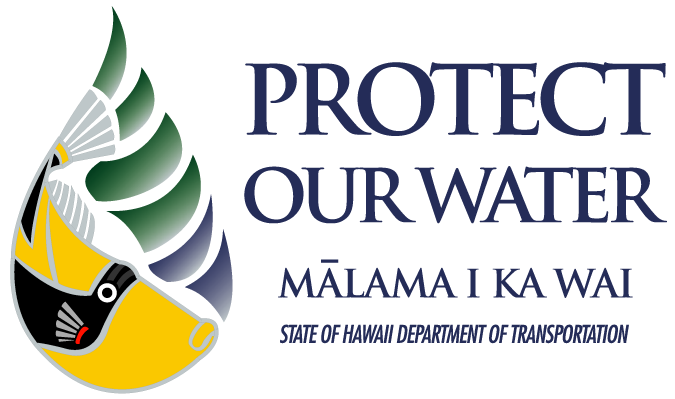The State of Hawaii Department of Transportation, Highways Division, Oahu District (DOT-HWYS) has numerous roadway construction projects that vary in size and complexity. All construction projects, regardless of size or area of land disturbance, must implement best management practices (BMPs) to control sediment and prevent erosion.
For this quarter, we want to highlight the Slope Improvements Erosion Control Phase 8 project based out of the Upper Halawa Field office for using a wide variety of slope protection devices and consistently maintaining BMPs to reduce the potential of sediment and other pollutants from entering the municipal separate storm sewer system (MS4) and receiving waterbodies. The project scope addresses eroded slopes at various locations around Oahu and involves installing erosion control matting and grouted riprap and retrofitting drainage structures.
A variety of temporary BMPs are being used on this project to prevent erosion and minimize sediment from entering the MS4 during construction activities. At several locations they have installed a straw wattle alternative at the toe of the slopes for sediment control. Compost filter socks have been used on the slopes as interceptors to break up the slope, reduce the velocity of stormwater flow coming down the face of the slope, and provide both erosion and sediment control. On two of the slopes, compost filter socks are used as perimeter control along the base of the slope and around the limits of the staging areas. Compost filter socks have also been installed along the backside of the slope to provide sediment control up gradient of a nearby waterbody. Check dams were installed downgradient of the project site to reduce the velocity of stormwater and allow sediment to settle out before entering the MS4. On site stockpile protection included covering stockpiles with plastic/visquine and perimeter control at the base of the slope to prevent sediment from leaving the pile.
Remember, the installation and on-going maintenance of temporary BMPs for both sediment and erosion control on projects will minimize the amount of sediment leaving a project and ultimately reduce the amount of pollutants entering the MS4 and receiving waterbodies.
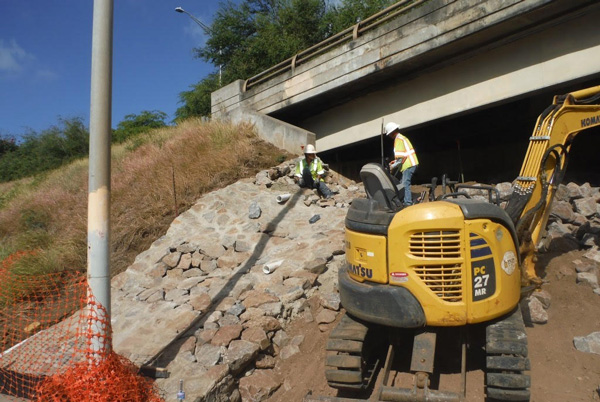
Compost filter socks are in place at the toe of the slope for sediment control until the installation of grouted riprap is completed.
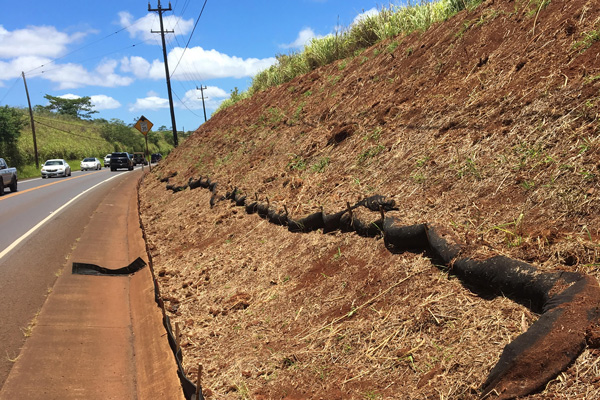
Compost filter socks are being used to break up the slope and reduce the velocity of stormwater flow coming down the face of the slope. A straw wattle alternative is in place at the toe of the slope for sediment control.
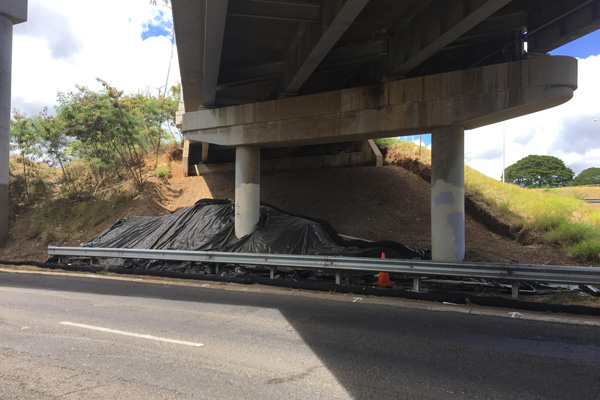
The stockpile is protected with a plastic/visquine cover and perimeter control at the base of the slope to prevent sediment from leaving the pile.
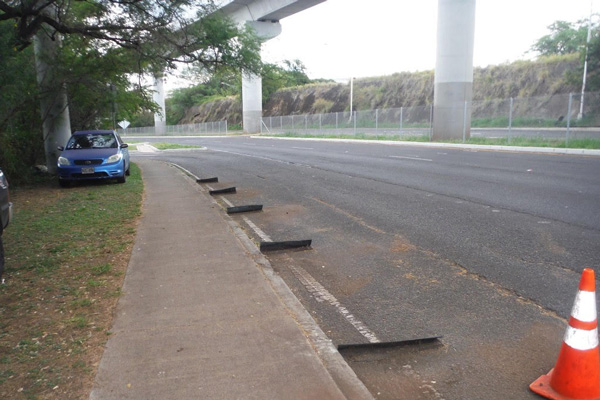
Check dams are installed downgradient of the project site to reduce the velocity of stormwater and allow sediment to settle out before entering the MS4.
